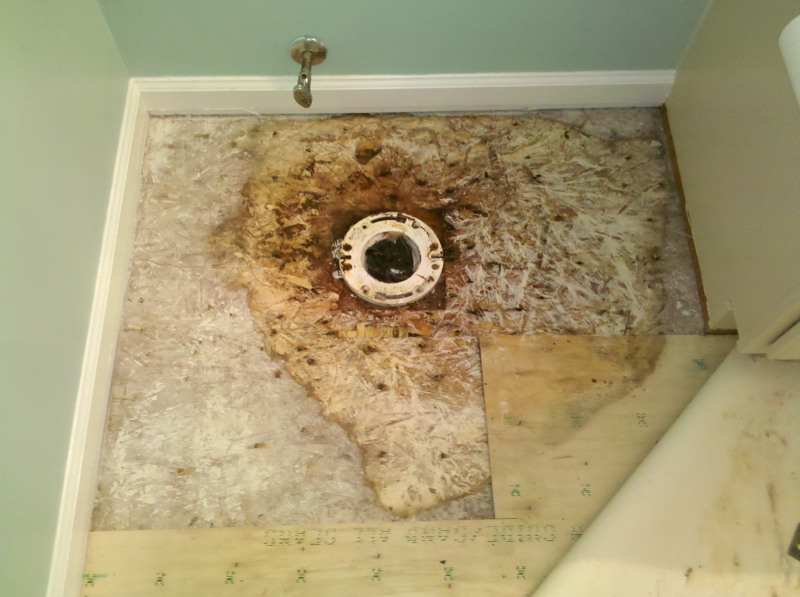Looking for Indicators of Water Damage in the Bathroom
Looking for Indicators of Water Damage in the Bathroom
Blog Article
Just how do you really feel on the subject of How to Fix a Water Damage Bathroom?

The washroom is exceptionally at risk for wet accumulation and potential water damage because of the constant use water in it. This article provides basic examination strategies to help spotting water damage dangers.
The constant use water in the washroom makes it extremely vulnerable for moist build-up as well as prospective water damages. By checking it consistently, you can lower water related problems.
The following set of inspections is very easy to perform and should be done when in every 3 months in order to maintain your shower room healthy as well as to avoid prospective water problems triggered by the tub, the shower, pipe joints as well as plumbing, sinks, cabinets, and the toilet
Do not neglect performing these inspections and be thorough while executing them. Remember that these straightforward assessments can save you a lot of money by providing very early signs for water damages
Sinks as well as Cabinets
Sinks and cabinets are revealed to dampness as well as humidity daily and are often forgotten. Check on a regular basis under the sink as well as on the countertop above it. Fix any type of drip in the trap as it may recommend drain problems. Look around the sink, slow-moving draining pipelines may show an obstructed drain. Change sink seals if they are broken or loosened.
Bath tub and Shower
The shower and also tub call for special attention as well as maintenance. Inspect the tiles and also replace if fractured. See to it that there is no missing out on grout in between the tiles. Check and change cracked caulking at joints where the wall surfaces meet the floor or the bath tub. Blocked drains pipes and pipes troubles will stop the bathtub from drying out and also may show major troubles beneath the tub. Consult with an expert quickly to stop structural damages. Pay attention to discolorations or soft locations around the bathtub wall surfaces as they might indicate an interior leakage.
Plumbing
Signs for water damage are difficult to identify because most pipelines are mounted inside the walls.
Pay unique attention to floor covering and walls wetness and discolorations as they may suggest an unseen plumbing issue. Examine moisture degrees in adjacent rooms also.
The Toilet
The bathroom is an at risk water junction. Inspect the water lines and also search for leakages around the commode seat, in the hose, as well as under the water container. If you spot any type of indicators of moisture on the flooring around the commode, check for leaks in the toilet edge and also tank seals.
Know that hanging commode dish antiperspirants increases the possibilities for obstructions.
Water Damage Signs In The Bathroom To Avoid Cleanup
Musty smell
This is one of the easiest signs to catch because musty smells are so odorous. The damp, earthy, moldy smell should be a big red flag. The smell will develop when moisture gets trapped in surfaces, and begins to facilitate mold growth. Leaking pipes under cabinets, inside walls, and behind shower fixtures will cause moisture to stay trapped and not dry, which will lead to mold growth and spread. As soon as you notice any musty smells in your bathroom, have it checked for hidden water damage and cleanup signs.
Visible mold
If the smell isn’t there to give it away, sometimes you will actually see mold growth. Finding mold in your bathroom is a serious problem, because mold is very harmful to your health. By the time mold growth is visible, it also means that water damage has already occurred and been present for some time. The only way the mold problem can be resolved is to find the source of the moisture and get it stopped. To safely and adequately remove mold, you need to have professionals handle the remediation. Do not waste any time in getting mold problems addressed, fixed, and sanitized so that you can protect you and your family from the many respiratory symptoms caused by mold exposure.
Damaged floors
Bathroom floors should be able to withstand some exposure to water while still remaining in good condition. However, when excess exposure or water leaks occur, they will begin to damage even the most water-resistant flooring. If you notice any cracking, bubbling, staining, or warping on your bathroom floors, there is probably a water leak somewhere causing the distortion. If you notice areas of the floor have become softer, or even have a spongy feeling, there is probably damage to the subfloor. Subflooring is typically made up of plywood. When plywood is exposed to water or moisture, it will absorb it. Once it has become saturated, the weight of the excess water will cause the wood to swell and soften. Check the floors in your bathroom frequently to catch any of these sings before they lead to damaged subflooring.
Changes on walls
When water leaks behind walls, it will cause changes in the drywall. Peeling plaster, blistering paint, and soggy wallpaper are all good indicators that excess water is building up behind the wall. Water leaking behind drywall will cause it to swell and be soft to the tough. If you start to notice gaps along the trim of your walls, or where tile meets the wall, it could also be a strong indicator that there is a leak behind the wall. Any changes, distortion, or damage on the walls should be evaluated as soon as you notice it to prevent further water damage and cleanup.

I hope you enjoyed our piece on Looking for Signs of Water Damage in the Bathroom. Thanks so much for spending some time to read through our content. Those who enjoyed our post plz don't forget to pass it around. Thanks so much for going through it.
Additional Resources Report this page